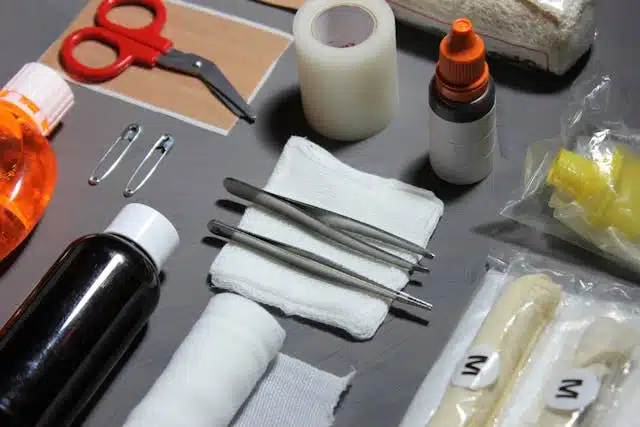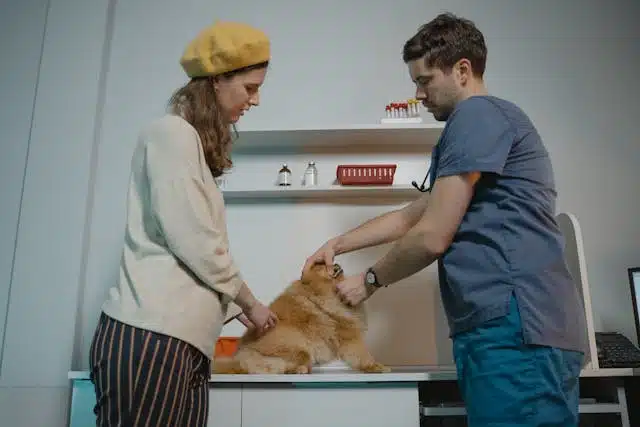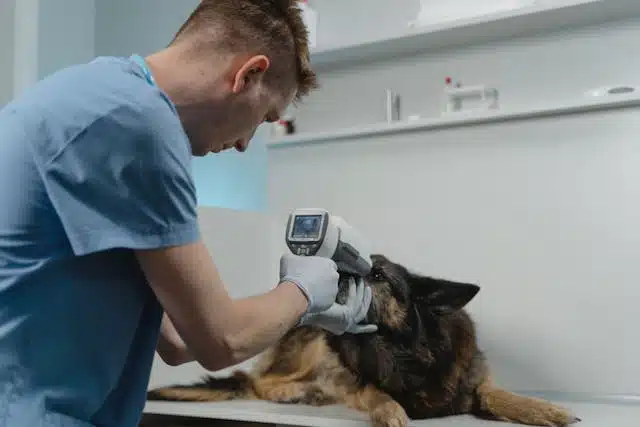Some dogs eat anything and everything within paw’s reach without a care in the world, and while it makes for great social media content, your dog’s curious nature can be dangerous if they eat toxic ingredients or dangerous objects. If your dog consumes a toxin or dangerous object, you naturally want to get it out of their system as soon as possible, and making your dog throw up may be an option. You should always consult your vet before inducing vomiting in your dog. Vomiting can sometimes be dangerous for your dog and result in even greater problems. This article will discuss when and how you can make your dog throw up safely.
Table of Contents
ToggleWhen Not To Make Your Dog Throw Up

There are several situations when inducing vomiting is dangerous and can be life-threatening for your dog.Do not induce vomiting in dogs that have eaten corrosive objects or toxin, have ingested a sharp object, have ingested a petroleum or oil-based product, or are a flat-faced breed, including pugs, bulldogs, Shih Tzus, French bulldogs, and Pekingese. These breeds also have an increased risk for aspiration pneumonia when vomiting. Among other situations, your dog has undergone abdominal surgery recently, is already showing signs of toxicity, or just ate a dangerous item in the last two hours.
Common Reasons To Make Your Dog Throw Up
On the other hand, there are some common pet toxins that can be removed by making your dog throw up. Some of these are chocolate, sugar-free foods that contain xylitol, onions, garlic, and chives, grapes or raisins, anti-inflammatory medications, and toxic plants like marijuana.
What To Include In Your Dog’s “Throw Up” Kit

Even if you have a first aid kit on hand, adding a dog-specific kit can ensure you’re always prepared. Various pre-made first aid kits are available, or you can assemble your own kit using this checklist. You should add the following to your dog’s throw-up kit: fresh, non-expired 3% hydrogen peroxide. Dogs can be poisoned if the concentration is too high. An expired peroxide may not work. It should include a syringe without a needle, a turkey baster, gloves, a plastic bag, cleaning supplies, and the contact information for your veterinarian.
How To Make Your Dog Throw Up

In the event your dog ingests something dangerous, call your veterinarian immediately. You can contact the nearest veterinary emergency hospital or the ASPCA Animal Poison Control Center if it is after hours. This is what you should do if your veterinarian recommends that you induce vomiting. First, feed your dog a small meal if they have not eaten in the last two hours. Having a full stomach will improve your chances of vomiting successfully. After that, fill a turkey baster or syringe with half to one teaspoon per 10 pounds of your dog’s weight. Don’t give your dog more than three tablespoons of hydrogen peroxide. Then gently pull back your dog’s lips on the side of its mouth and slowly squirt in the peroxide. You can also administer this treatment at the front of your dog’s mouth, but be sure to administer it slowly so they do not inhale the peroxide. Also, foaming at the mouth is completely normal. Then wait 15 to 20 minutes and closely monitor your dog for vomiting. If they appear to be smiling, it’s a good indication that they’re nauseous and will soon throw up. Don’t let them reingest their vomit. Make sure to collect the vomit for your vet to confirm the toxic substance or object has been removed. If no vomiting occurs after 15 minutes, a second dose of hydrogen peroxide solution can be given, but no more than three tablespoons in total volume. If your dog has not vomited at this point, take them to your veterinarian. Your veterinarian might need to administer prescription medications such as apomorphine in order to safely induce vomiting in your dog. Additional medical care may also be required.
How Not To Induce Vomiting

Now that you know how to make your dog throw up safely, it is also important for you to know how not to do so.You should never use salt, alcohol, ipecac, or olive oil to induce vomiting in your dog, and you should never force your dog to vomit by sticking your finger down his throat.
Before And After-Care
Dog-proofing your home and keeping all chemicals, human foods, and medications out of paw’s reach is the best way to prevent ingestion of dangerous food or objects. In order to reduce your dog’s chances of ingesting hazardous objects or food from boredom, make sure they receive exercise, proper nutrition, and enrichment tools and chews. As well, you may want to consider giving your dog a probiotic supplement to support their gut flora and GI tract during the recovery from diarrhea or vomiting. If you suspect that your dog’s health is compromised for any reason, you should always consult your veterinarian.



